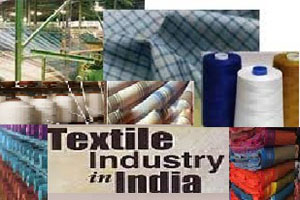
Indian textile sector with adequate policy support has competency to cross $500 bn mark by 2025
YarnsandFibers News Bureau 2014-11-25 17:00:00 – MumbaiIndian textile industry with adequate policy support from the government and rights steps has all the potential to cross USD 500-billion mark by 2025 from its present estimate of USD 108 billion.
The USD 500 billion market figure consists of domestic sales of USD 315 billion and exports of USD 185 billion. The current industry size comprises domestic market of $68 billion and exports of $40 billion. This will also catalyse another 35 million jobs and USD 200 billion of investments , according to a study report by leading textile and polyester consulting firms Wazir Advisors and PCI Xylenes & Polyesters, said Wazir Advisors Joint Managing Director Prashant Agarwal.
They carried out primary research in China, South Korea, Taiwan and South East Asia to assess and contrast their respective evolutions to understand what India needs to consider in order to establish an optimum, polyester-based textile industry.
Agarwal said that India is a goldmine for growth of textiles and apparel value chain, whose potential is yet to be fully tapped. The government needs to give more support to the industry with specific focus on manmade fibre based textile value chain.
Immediate GST implementation to remove differential tax treatment to manmade fibres, creation of mega textile parks, single window system for FDIs, labour law reforms, extension of loan period in case of TUFS (Technology Upgradation fund scheme) and R&D promotion are some of the policy measures needed to boost the industry.
Implementation of these suggestions will help to attract investment technology upgradation, innovation and healthy growth of the industry.
The Indian textile industry ranks second in the world with 5.2 percent share of global trade, but far behind China. This is likely to change, with China's share in global textile trade expected to go down by 5 percent which will help India to push up its exports to $185 billion, even as the domestic apparel market is likely to grow by 4.5 times.
Indian textile industry needs to effect a major shift in its fibre mix, which is presently tilted towards cotton (55 per cent), while the fibre consumption of the world is tilted towards polyester fibre (50 per cent), it maintained.
Indian market is also consuming more manmade fibre- based products as cotton prices are fluctuating unpredictably.
Also global brands are setting up more shops here and market share of women's wear is increasing and private labels are gaining prominence in organised retail, the report said.
India may start consuming more polyester than cotton in the next five years, which will increase the market size of polyester fibre by 1,500 thousand tonnes.
Wazir & PCI plans to set up Polyester Textile Investment Promotion Cell to support both Indian and overseas manufactures to know more about the sector which will help identify investment opportunities, form JVs and make investment in manmade fibre-based textile value chain of India.
Major outcome of their research work will be shared at an exclusive, invitation-only seminar, to be attended by a select group of industry leaders in major textile centres Mumbai, Delhi, Surat, Ludhiana and Coimbatore.
Market Intelligence
Ask for free sample Report

experience
Customer Base
dedicated team
Countries Served Worldwide









